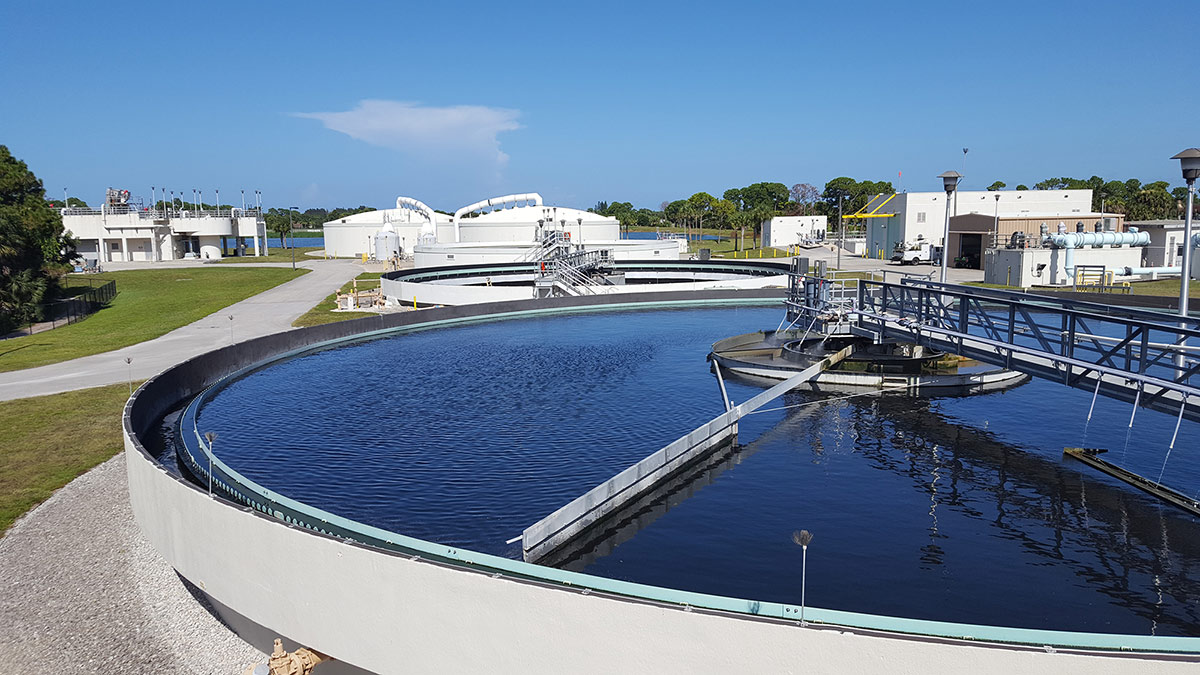Major Benefits of Upgrading Your Current Wastewater Treatment System
Wiki Article
Recognizing Wastewater Treatment Processes and Their Ecological Effect
The details of wastewater treatment procedures play a pivotal function in mitigating ecological difficulties related to water pollution. Each stage, from preliminary to sophisticated therapies, is created to deal with particular contaminants, ultimately protecting both public wellness and aquatic environments. Nonetheless, despite technical innovations in therapy performance, considerable challenges continue, including the management of recurring toxins and the effects of nutrient overflow. As we check out the complexities of these processes, it ends up being necessary to wonder about how far current approaches can develop to fulfill the expanding demands of sustainability and environmental preservation.Introduction of Wastewater Treatment
Just how is wastewater transformed right into a safe resource for the atmosphere? Wastewater treatment is a critical process made to get rid of contaminants from made use of water, therefore safeguarding public health and safeguarding communities. This process starts with the collection of wastewater from residential, commercial, and industrial sources, which is then directed to therapy centers.At these facilities, numerous physical, chemical, and organic methods are employed to deal with the wastewater. Consequently, organic therapies, such as activated sludge processes, make use of microorganisms to break down organic matter.
The treated effluent can be safely released right into all-natural water bodies or reused for watering and industrial objectives, advertising source preservation. Furthermore, the therapy procedure generates biosolids, which can be repurposed as plant foods or dirt modifications, further improving sustainability.
Phases of Treatment Procedures
The wastewater therapy process generally includes 3 main phases: preliminary, key, and secondary treatment. Each stage serves a distinct role in decreasing the contaminant lots and ensuring the effluent satisfies environmental standards prior to discharge.
The key treatment phase concentrates on the physical separation of put on hold solids from the wastewater. With sedimentation, larger particles settle at the end of sedimentation storage tanks, developing sludge, while lighter products, such as oils and greases, float to the surface area and are skimmed. This procedure dramatically minimizes the organic and inorganic lots in the wastewater.
Secondary treatment is an organic procedure targeted at more minimizing the concentration of natural issue. Various methods, including turned on sludge systems and dripping filters, utilize microbes to metabolize organic contaminants. This stage is important for achieving the required biochemical oxygen need (FIGURE) decrease, inevitably leading to cleaner effluent ready for discharge or more treatment. Each phase is crucial in safeguarding ecological and public wellness.

Advanced Therapy Technologies
Following the secondary treatment procedures, progressed therapy innovations play a crucial duty in further boosting the top quality of dealt with wastewater. These modern technologies are developed to remove recurring contaminants that are not successfully eliminated throughout key and additional therapies, making certain the effluent meets rigorous governing standards.Among the commonly made use of sophisticated therapy techniques are membrane filtration, reverse osmosis, and progressed oxidation procedures. Membrane purification, including microfiltration Full Report and ultrafiltration, works in separating fine bits, virus, and colloids from the water (Wastewater). Reverse osmosis uses semi-permeable membranes to get rid of liquified solids, resulting in premium water suitable for various applications
Advanced oxidation processes (AOPs) use strong oxidants to deteriorate natural pollutants, consisting of pharmaceuticals and individual treatment products that are immune to conventional therapy. These approaches boost the biodegradability of intricate compounds, promoting their removal.
An additional significant technology is using organic nutrient elimination procedures, which especially target nitrogen and phosphorus, stopping eutrophication in getting water bodies. Overall, advanced treatment innovations are vital for accomplishing greater levels of filtration, promoting water reuse, and safeguarding public health and wellness while resolving the obstacles connected with wastewater management.
Environmental Advantages of Therapy
Numerous environmental advantages emerge from efficient wastewater treatment processes that contribute to ecosystem health and wellness and sustainability. Mostly, these procedures significantly reduce the launch of dangerous pollutants right into natural water bodies, which assists maintain aquatic ecosystems. By getting rid of impurities such as hefty metals, nutrients, and microorganisms, treated wastewater reduces the danger of waterborne diseases and advertises biodiversity in marine atmospheres.Moreover, wastewater therapy facilities typically use innovative technologies that make it possible for water recycling and reuse. This practice not just saves freshwater sources yet likewise lowers the demand on all-natural water products. Improved nutrient elimination from wastewater can additionally stop eutrophication, a process that causes algal blossoms and succeeding oxygen exhaustion in water systems.
Additionally, efficient treatment procedures can reduce greenhouse find more information gas discharges, specifically methane and nitrous oxide, which are often launched throughout unattended wastewater decay. By catching and utilizing biogas from anaerobic digesters, centers can transform waste right into eco-friendly power, thereby adding to a decrease in nonrenewable fuel source reliance.
Challenges and Future Patterns
While the environmental benefits of wastewater treatment are clear, a number of obstacles persist that hinder ideal end results in this field. One significant problem is aging infrastructure, which usually causes inadequacies and raised functional expenses - Wastewater. like this Several treatment plants were created decades ago, and their capabilities do not line up with modern demands, that include more stringent regulatory requirements and greater volumes of wastewater due to urbanization
Looking in advance, there is an expanding emphasis on source healing and circular economic situation concepts within wastewater therapy. Innovations such as anaerobic food digestion, which can produce biogas, and advanced filtration modern technologies are getting grip. These approaches not just enhance therapy efficiency but additionally advertise sustainability.
Inevitably, attending to these difficulties needs cooperation among stakeholders, investment in innovation, and a commitment to recurring research study. By accepting these fads, the wastewater therapy sector can develop to fulfill the demands of a transforming environment and society.
Conclusion
In conclusion, wastewater treatment procedures play an important duty in boosting environmental top quality and public health and wellness. The multi-stage treatment structure, combined with sophisticated modern technologies, successfully reduces contamination and advertises sustainable water management.Report this wiki page